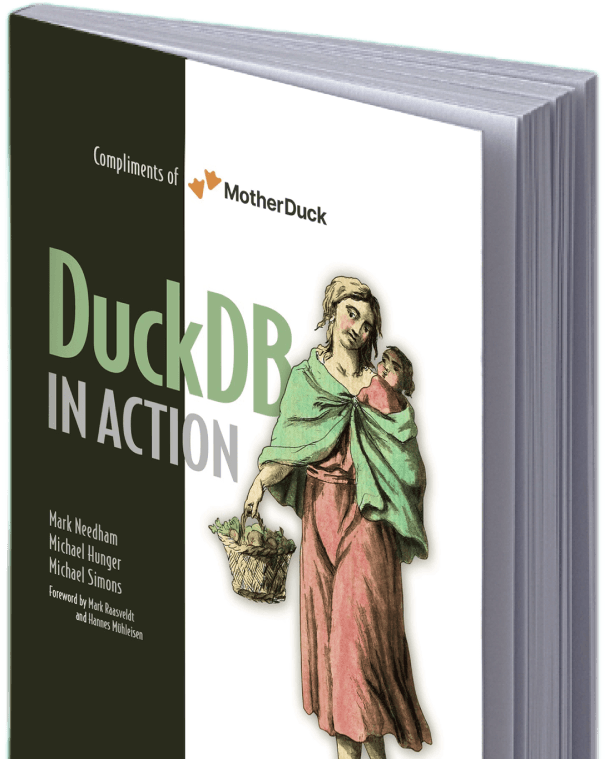3 min read
Performance Considerations for Large Datasets
This is a summary of a book chapter from DuckDB in Action, published by Manning. Download the complete book for free to read the complete chapter.

Preparing large volumes of data to be imported into DuckDB
Handling large datasets involves downloading, transforming, and importing raw data into DuckDB. This process can be tedious but is essential for gaining control over the queries. For the Stack Overflow dataset, this involves downloading compressed XML files, converting them to CSV using external tools, and then loading them into DuckDB.
Querying metadata and running exploratory data analysis (EDA) queries on the large datasets
Once the data is imported into DuckDB, exploratory data analysis (EDA) queries help in understanding the dataset's structure and content. For instance, using DuckDB’s read_csv function to inspect the Tags file and running queries to determine the most popular tags and their distribution across different usage buckets.
Exporting full databases concurrently to Parquet
Exporting datasets to Parquet files is efficient for storage and further processing. DuckDB supports concurrent exports, significantly speeding up the process. The Parquet format also supports schema inclusion and optimized reading with column selection and predicate pushdown, which are advantageous for large datasets.
Using aggregations on multiple columns to speed up statistical analysis
Performing aggregations on multiple columns simultaneously in DuckDB can be optimized using advanced SQL features. This allows for efficient computation of various statistics such as sums, averages, and standard deviations across different columns, which is particularly useful for large datasets.
Using EXPLAIN and EXPLAIN ANALYZE to understand query plans
The EXPLAIN and EXPLAIN ANALYZE commands in DuckDB provide insights into the query execution plan, revealing how queries are processed and optimized. This information is valuable for fine-tuning queries, understanding the performance impacts, and identifying bottlenecks in query execution.
Loading and querying the full Stack Overflow database
The Stack Overflow data, when loaded into DuckDB, can be queried to extract meaningful insights. This involves creating tables, running exploratory queries, and summarizing data to understand user behavior, popular tags, and activity trends over time. Efficient data loading and querying strategies ensure performance remains high even with large datasets.
Exploring the New York Taxi dataset from Parquet files
For very large datasets like the New York Taxi dataset, DuckDB’s ability to query directly from Parquet files using predicate and projection pushdown is crucial. This method avoids the need to import the entire dataset into DuckDB, leveraging cloud storage and metadata to perform efficient, on-the-fly analysis.
Making use of the taxi dataset
Analyzing the New York Taxi dataset involves computing various statistics such as average trip distance, fare amounts, and fare rates over time. Filtering outliers and focusing on specific time periods or conditions provides valuable insights into passenger behavior and trip patterns.
Summary
Key takeaways from handling large datasets include the importance of initial data preparation, leveraging DuckDB’s capabilities for efficient querying and analysis, and the benefits of using Parquet files for storage and processing. DuckDB’s advanced query planning and execution features, along with its ability to handle large datasets directly from cloud storage, make it a powerful tool for data analysis.


